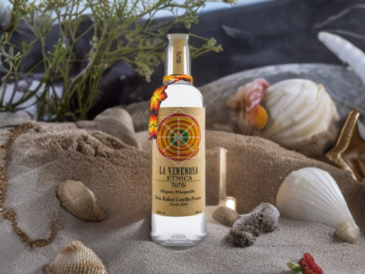Introducing Raicilla: Exploring the World of Mexican Spirits
If you’re a fan of tequila or mezcal, then you’ll want to try Raicilla. Raicilla, also called a “spiritual drink,” is processed similarly to mescal and tequila, but uses a different plant called Agave Inaequidens, found only in Jalisco. Raicilla is made by fermenting the processed agave hearts with distilled water and seeds for 6 to 15 days. Unlike tequila, which doesn’t use seeds in its production process.
Raicilla, an ancient spirit, has an intriguing post-colonial history. Originally a drink for farmers, it became prohibited and heavily taxed by the Spanish after their conquest. Nevertheless, production continued clandestinely, with locals referring to it as “little root” or “raicilla” and lying to tax collectors about its ingredients, claiming it was made from the “roots” of agave rather than the piña (which was actually used).
Raicilla, despite its long history, remains a mystery to many due to the category’s diversity and some producers making the drink underground.
Let’s explore Raicilla!
How is Raicilla Made?
Raicilla is produced by distilling a fermented mash made from the central stem of the maguey plant in rudimentary stills. The mash is slow-cooked, and the steam is condensed on a copper cone, traditionally cooled by spring water, to make high-proof alcohol. It takes 10 kg of agave to make a liter of Raicilla, and many different species of agaves, including Agave angustifolia, Agave maximiliana, Agave inaequidens, and Agave rhodacantha, are used. Water is added to control proof, and it is usually over 100 proof before dilution.
Different Types of Raicilla
One thing that makes Raicilla unique is the variety of agave plants that can be used to make it. While tequila can only be made from the blue weber agave, Raicilla can be made from various agave plants. This means that different types of Raicilla can have very different flavor profiles.
Some of the most common types of agave used to make Raicilla include:
- Lechuguilla: A wild agave plant that grows in the Jalisco region. It has a smoky, vegetal flavor.
- Chico Aguiar: A small, sweet agave plant that produces a floral, fruity spirit.
- Verde: A larger, more robust agave plant that produces a spirit with a sweet, earthy flavor.
- Cenizo: A spiky agave plant that produces a smoky, spicy spirit.
Raicilla Brands to Try
If you’re interested in trying Raicilla, a few brands are worth seeking out. Some of the most popular Raicilla brands include:
- La Venenosa: La Venenosa Raicilla follows a distilling tradition nearly 500 years old. Created by “Chef” Esteban Morales, La Venenosa showcases the varieties of agave and distillation techniques native to Jalisco.
- Bonete – Bonete Raicilla is a unique, traditional spirit made with a passion for preserving cultural heritage. The distillation process is an art, using a rare and exotic tree trunk called Bonete (Jacaratia Mexicana), which grows only on Mexico’s pacific coast. The use of this tree trunk provides a one-of-a-kind flavor profile that is unmatched by modern, more efficient stills.
- Tomas – Tomas Raicilla is made with agave Maximiliana and is produced for us by Gerardo Peña. Don Gerarado does everything by hand, from planting and harvesting the agave Maximiliana, roasting the agave in a wood-fired adobe oven of his unique design, mashing and fermenting the agave, and distilling the spirit in stills that he designed and built himself.
Explore Raicilla at SF Tequila Shop
If you’re interested in trying Raicilla, head to SF Tequila Shop in San Francisco. They offer a wide selection of Raicilla brands, tequila, mezcal, and other spirits. Their knowledgeable staff can help you choose a Raicilla that suits your taste preferences and offer guidance.



